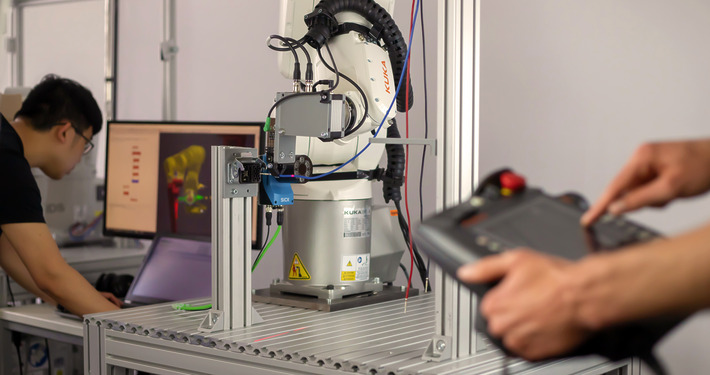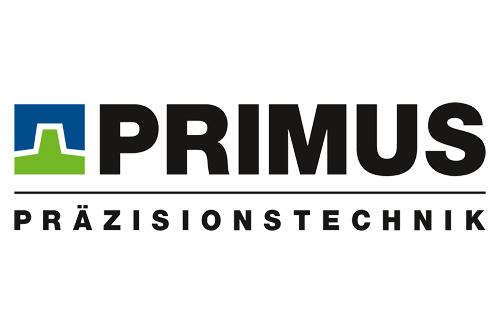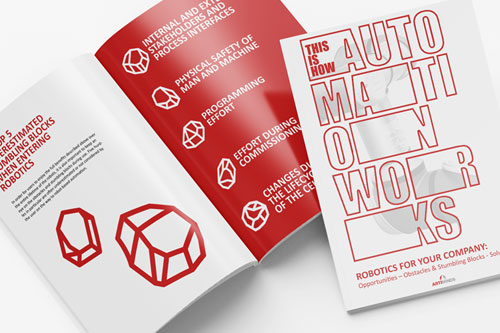BLOG POST
Why a Feasibility Study is Essential
Robotic automation promises efficiency gains and cost reduction, but the risks and challenges should not be underestimated. In practice, it often becomes evident that companies underestimate the complexity of implementation. Frequently, executives are quick to invest in robotic hardware while hoping to achieve quick results. However, more often than not it turns out that important process steps have been overlooked, causing the expected improvements to be achieved much later or perhaps even not at all. Additionally, adjustments to the original plan often lead to unexpected extra costs that exceed the allocated budget.
Before companies invest in robotic solutions, it is crucial to ensure that the process can be automated technically and economically. A thorough feasibility study helps minimize risks and ensures that the automation achieves the desired ROI (Return on Investment). At ArtiMinds Robotics we pursue three objectives when carrying out feasibility studies: Sound analyses, realistic evaluation and concrete optimization proposals that save time and money in the long run.
What is a Feasibility Study?
A feasibility study, also known as a feasibility analysis, aims to determine whether a robotic process is both technically and economically feasible. The goal is to identify opportunities and challenges early on, before significant investments are made.
At ArtiMinds Robotics, we conduct comprehensive feasibility studies to provide our clients with a sound evaluation of whether robotics automation is technically feasible and how robots can be optimally implemented. It is not just about finding out if an idea works, but also about developing alternative solutions if the original approach proves impractical. We are committed to ensuring that our clients ultimately receive a feasible concept, regardless of the outcome of the initial evaluation.
The Process of a Feasibility Study
In collaboration with the customer, we first define the framework conditions and requirements, such as the necessary precision or speed at which the robot should operate. Besides that, it is also very important to establish the specific goals of the robotic project. Should certain cycle times be achieved? What is the budget limit? How much space is available in the production environment?
Once these parameters are clarified, we begin with the actual investigation. Here, we utilize our in-house software tools, ArtiMinds Robot Programming Suite (RPS) and ArtiMinds Learning & Analytics for Robots (LAR). These tools allow for precise programming of the robots and for detailed process optimizations to meet the defined framework conditions. After programming, the process is put into operation in a test setup, checked, and analyzed.
Based on these results, we provide a profound initial evaluation. If necessary, the process can then be further refined and optimized. Ultimately, it is the client who decides whether and how the automation process should be implemented.
Advantages of a Feasibility Study
A feasibility study offers the advantage of thoroughly examining the automation process without the need to invest in expensive hardware like robots and sensors in advance or to intervene into ongoing production processes. If it turns out that the original approach is not feasible, we develop alternative robotic automation concepts that meet the specified framework conditions. This way, companies avoid unnecessary expenses and minimize the risk of investing resources in a process not suitable for automation.
Additionally, a solid feasibility study contributes to making the automation process more efficient during the later integration phase. Once the goals are clearly defined, the process can be implemented in a more structured and manageable manner.
A Bit More: Process Development Instead of Classic Feasibility Study
Our approach at ArtiMinds Robotics goes beyond the classic feasibility study. While other studies often focus solely on the question of “feasible or not feasible”, we develop alternative robotic automation concepts if the original approach is not feasible; meaning the proof of concept is negative. Therefore, we speak of process development rather than feasibility study. Our goal is to always provide our clients with a viable concept that meets their requirements.
This way, we avoid binary decisions and ensure that the client invests in the proper approach from the beginning.
Feasibility Study as the Key to Successful Robotic Automation
Companies looking to enhance the full potential of robotics should not forgo a profound feasibility study. It is the key to identifying risks early, saving time and money, and steering the automation solution towards success from the very beginning. At ArtiMinds Robotics, we see ourselves not only as consultants but as a partner in sustainable process development.
Would you like to benefit from the advantages of a feasibility study during your next robotics project?
Contact us today for a free initial consultation to find out how we can help you optimally automate your processes.
In order to maintain high repeatability and process stability even for large quantities, Primus Präzisionstechnik automated the assembly of a gear unit using a flexible robot cell. The vision- and force-controlled application was programmed with ArtiMinds RPS.
With this white paper, we want to provide you with guidance for your automation plans. To help you to avoid typical pitfalls when using robots, we highlight the top 5 underestimated challenges and stumbling blocks when getting started in robotics and provide you with helpful tips and interactive checklists.
We answer the most important questions about the ArtiMinds software solutions, applications and the company in our FAQ section.







